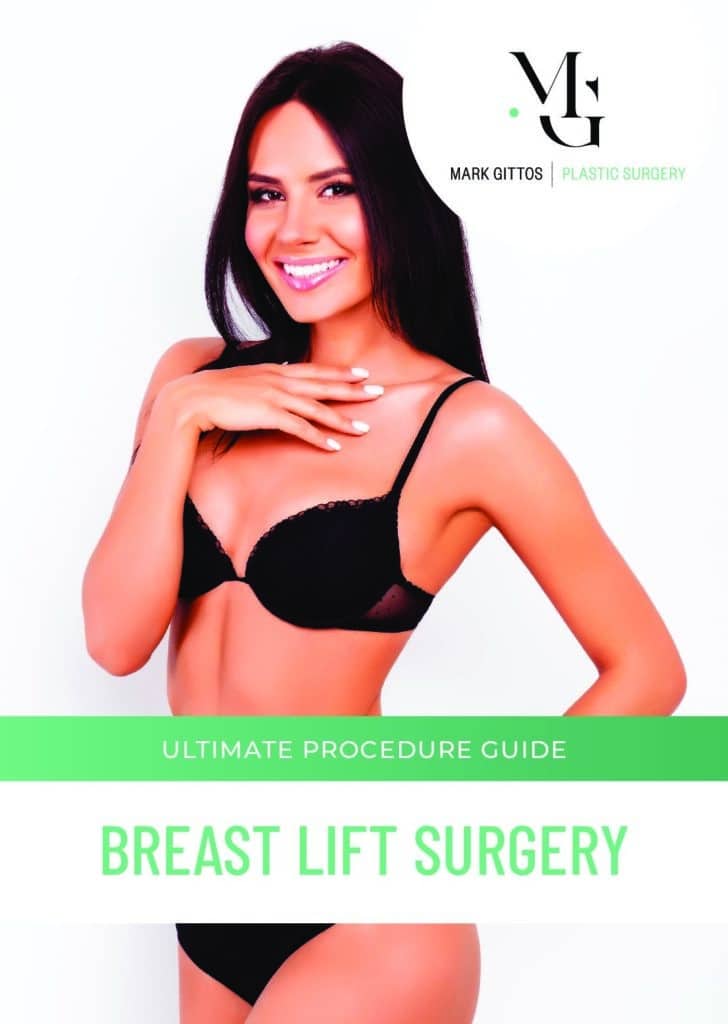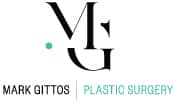How Is the Recovery after Breast Lift
A breast lift entails a surgical procedure geared towards raising and firming the breasts, a process realised through the removal of excess skin and tightening the surrounding tissue to foster a new and enhanced breast contour. This procedure may also include the repositioning of the areola and nipple to attain a more youthful appearance. Like all surgeries, a mastopexy (the medical name for a breast lift) necessitates a structured recovery procedure to not only secure optimum results but also to guarantee your comfort as you heal. Understanding the intricacies of the recovery process is important as it equips you with what to expect post-surgery, aiding in reducing complications through informed decisions on what to embrace and avoid during this period. It serves as a tool to ease anxiety, grounding you in the reality of what is considered a normal progression in the healing process, thus curbing unnecessary worries.
Dr Mark Gittos is renowned for his expertise in breast lift surgery, having successfully conducted over 4000 plastic surgery procedures. This impressive track record positions him as one of the leading surgeons in New Zealand.
Download Dr Mark Gittos’ Guide to Breast Lift Surgery – Mastopexy for Sagging Breasts

Why People Choose to Have a Breast Lift
Individuals opt for a breast lift for a multitude of personal and unique reasons.
Ageing
One of the primary motivators is the natural ageing process that everyone undergoes. As we age, the skin gradually loses its elasticity, which can lead to a sagging appearance of the breasts, bringing about a longing for a more youthful breast contour. Thankfully, a breast lift can counteract these effects.
Pregnancy
Pregnancy and breastfeeding are remarkable phases in life but they come with substantial changes to the breast. They often induce a loss of volume and changes in shape that might be less than desirable. It is here that a breast lift can work wonders, restoring the breasts closer to their pre-pregnancy appearance, and harmonising the proportions of the breasts with the rest of the body.
Weight Fluctuations
Weight fluctuations are a common part of many people’s lives and can, unfortunately, lead to alterations in the shape and size of the breasts. However, a breast lift stands as a reliable solution, helping individuals achieve a more balanced and proportional appearance that aligns harmoniously with their overall body shape. This is especially notable in the sense of renewed comfort it brings during physical activities, enhancing mobility and ease.
Personal Desire
Lastly, personal satisfaction sits at the heart of why many opt for this surgical procedure. It’s about fostering a harmonious relationship with one’s body, enhancing physical appearance to meet personal expectations and visions. The surgery goes beyond aesthetics, influencing a broader spectrum of life, by potentially offering a wider range of clothing options and promoting a more joyful approach to social and personal engagements.
What Does the Breast Lift Entail?
The breast lift procedure is generally carried out under general anaesthesia. The surgery involves several steps:
- Incision: The surgeon makes an incision, the pattern of which can vary depending on the existing breast tissue, the amount of excess skin to be removed, and personal goals
- Reshaping: The underlying breast tissue is lifted and reshaped to improve breast firmness and contour
- Nipple and areola repositioning: In many cases, the nipple and areola are repositioned to a natural, more youthful height
- Excess skin removal: After reshaping the breast tissue, the excess skin is removed to promote a firmer breast
- Closing the incisions: The incisions are closed using surgical sutures, skin adhesives, or surgical tape
Preparing for Your Recovery
Before undergoing a breast lift, taking the time to prepare your recovery space is a vital step in ensuring a smooth and comfortable recovery period. To start with, focus on setting up your bed with comfortable bedding that includes soft and supportive pillows, facilitating a restful position during your recovery. Also, it would be a good idea to keep essential supplies close at hand. Items such as tissues, a water bottle, and your necessary medications should be within arm’s reach to prevent any strain.
For your entertainment needs, organise a small station nearby with a selection of books or magazines, or have the TV remote control within easy reach to keep boredom at bay as you recuperate. Another practical tip is to rearrange your wardrobe before the procedure to make sure that all your clothing is easily accessible without the need to stretch or bend excessively, which can potentially harm your recovery progress. By putting these simple yet effective measures in place, you’ll be setting up a recovery space that promotes comfort and convenience during the crucial initial stage of recovery.
Essential Supplies for the Breast Lift Recovery
Having the right supplies on hand can aid in a smoother recovery process. Here is a list of essential items you might consider:
- Medications: Have all your prescribed medications ready, along with a schedule to help you keep track of your doses
- Cold Packs: Cold packs can be useful in reducing swelling. Always have a few in your freezer
- Comfortable Clothing: Stock up on loose and comfortable clothing that does not require you to lift your arms too high when dressing
- Hygiene Products: Have hygiene products such as unscented soap and wipes to maintain cleanliness without irritating your skin
Arranging for Help during the Initial Recovery Period
In the initial days following your surgery, you will need assistance with daily tasks. Here are some points to consider:
- Personal Assistance: Arrange for a family member or a friend to stay with you for at least the first 72 hours post-surgery
- Meal Preparation: Consider preparing meals in advance or arranging for someone to cook for you to avoid straining yourself in the kitchen
- Child and Pet Care: If you have young children or pets, arrange for someone to help take care of them during your recovery period
- Transport: Ensure you have someone to drive you to and from the hospital, as well as to any post-operative appointments
Preparing adequately for your recovery can make a significant difference in your healing process, ensuring it is as comfortable and stress-free as possible.
The First Week of Breast Lift Recovery

The first week of your recovery is a foundational period where healing truly begins.
Managing Discomfort and Pain
Managing discomfort effectively can aid in a smoother recovery process. Here are some tips:
- Medications: After a breast lift surgery, experiencing a degree of discomfort and pain is to be expected. It’s highly beneficial to take a proactive approach in managing these post-surgery discomforts to aid in a smoother recovery. One of the first steps in this direction is being diligent with your medications. It’s vital to stick to the medication schedule prescribed by your doctor to both manage pain and prevent infections. Avoid the temptation to self-medicate and always consult your plastic surgeon if you’re contemplating any changes. Also, being aware of any allergies to the medications prescribed and keeping your medical team informed is important
- Rest: A substantial part of the recovery revolves around getting enough rest. Finding and maintaining a comfortable sleeping position, perhaps in a reclined position, can offer greater comfort in the initial recovery stage. Investing in supportive bedding can also play a pivotal role in preventing bodily strains as you rest. And while it’s good to take small steps towards being active again, ensure to take regular breaks to avoid overexertion
- Hydration: Keeping yourself hydrated is another simple yet effective way to manage discomfort. Drinking sufficient fluids daily, including warm drinks such as herbal teas, can be soothing. However, it is advisable to stay away from alcoholic beverages during this period as they can heighten discomfort
- Gentle Exercises: Incorporating gentle exercises into your daily routine can aid significantly in the recovery process. Simple actions such as performing ankle rotations can help promote circulation and prevent the formation of blood clots. Depending on individual circumstances, Dr Mark Gittos might recommend physiotherapy sessions to gradually regain mobility. Engaging in breathing exercises could also be beneficial in promoting circulation and aiding in the recovery process
Long-term Recovery
As you step into the long-term phase of recovery, the focus shifts to nurturing and settling into your renewed self.
Physical Activities to Avoid
It is important to know which physical activities to avoid to ensure optimal healing. Here are some guidelines:
- Heavy Lifting: Avoid lifting heavy objects for at least 6 weeks to prevent strain on your healing tissues
- High-Impact Sports: Steer clear of high-impact sports and activities that might cause bouncing or jarring movements
- Overhead Stretching: Limit activities that require overhead stretching to protect your incisions and promote healing
- Hot Baths and Saunas: Avoid hot baths and saunas for a few weeks as they can increase swelling
Scar Management and Care
Scar management is a vital part of the recovery process. Here are some tips to help you care for your scars:
- Silicone Sheets or Gel: Using silicone sheets or gel can help in reducing the appearance of scars
- Sun Protection: Protect your scars from the sun to prevent darkening. Use a high SPF sunscreen when you are outdoors
- Gentle Massage: With your surgeon’s approval, you can start gentle massage to soften the scars and improve their appearance
- Patience: Remember that scar maturation is a slow process and it can take up to a year or more for scars to fade significantly
Following Up with Your Surgeon
Regular follow-ups with Dr Mark Gittos are essential. Here is what you can expect:
- Routine Check-ups: Attend all your scheduled check-ups to monitor your healing process
- Addressing Concerns: Use these appointments to address any concerns or questions you may have
- Guidance on Activities: Your surgeon will provide guidance on when you can resume various activities, including exercises
- Feedback: Provide honest feedback about your recovery experience to help your plastic surgeon tailor your recovery plan
Adjusting to Physical Changes
After undergoing a breast lift, it will take time to get accustomed to the physical changes. Here are some tips to help you adjust:
- Patience: Give yourself time to adapt to the changes. It is a gradual process and being patient with yourself is key
- Clothing Adjustments: You might find that your clothes fit differently. Take time to find what works for you and showcases your new contour beautifully
- Positive Mindset: Maintain a positive mindset and focus on the improvements and the renewed sense of joy your new appearance brings
- Seek Support: If you find it challenging to adjust, don’t hesitate to seek support from a therapist or a support group
Clothing and Bra Recommendations
Finding the right clothing and bras is an important aspect of embracing your new appearance. Here are some recommendations:
- Bra Fitting: Consider getting a professional bra fitting to find bras that are comfortable and supportive
- Comfortable Fabrics: Choose fabrics that are soft and comfortable against your skin to prevent irritation
- Flattering Styles: Experiment with different clothing styles to find what flatters your new shape the most
FAQs about Breast Lift Recovery

Can I shower normally after the surgery?
- You will need to follow your plastic surgeon’s guidance on when you can resume showering, typically it is advised to wait for 24 to 48 hours post-surgery to keep the surgical site dry and reduce the risk of infection.
What kind of support bra should I wear during the recovery?
- A surgical or support bra that is wire-free and provides ample support should be worn continuously for the first few weeks to aid in reducing swelling and supporting your breasts.
Can I exercise after a breast lift?
- While light activities such as walking can be resumed shortly after surgery, you should avoid strenuous exercises for at least a month or as advised by Dr Mark Gittos to allow proper healing.
Will I experience loss of sensation in my breasts?
- It’s not uncommon to experience changes in breast sensation, including numbness or increased sensitivity, initially after surgery. This typically improves over time, but in rare cases, it can be permanent.
When can I return to work after a breast lift?
- The timeframe to return to work depends on the nature of your job. Generally, you can return to a non-strenuous job within 1 to 2 weeks, but always follow the guidance of your plastic surgeon.
Further Reading about Breast Surgery with Dr Mark Gittos
- Read Dr Gittos’ Blog about How to Fix Saggy Breasts – Breast Lift, Implants or Both?
- Read Dr Gittos’ Blog about Breast Lift with Implants NZ
- Read Dr Gittos’ Blog about How to Reduce Swelling and Bruising After Breast Reduction Surgery
- Read Dr Gittos’ Breast Lift without Implants
Medical References about Breast Lift
- Breast Lift – Cleveland Clinic
- Breast Lift – American Society of Plastic Surgeons
- Breast Lift – Mayo Clinic
- Mastopexy (Breast Lift Surgery) – WebMD
- Breast Reshaping After Massive Weight Loss – PubMed
About Dr Mark Gittos FRACS (Plast) – New Zealand Plastic Surgeon
Practice locations in Herne Bay Auckland, Northland and Bay of Plenty – Kerikeri, Whangarei, New Plymouth & Tauranga
Dr Mark Gittos is a leading Specialist Plastic Surgeon and operates a practice in Herne Bay, Auckland and in the UK. The practice focuses on both surgical and non-surgical procedures, each designed to help restore, improve or change a physical characteristic or problem. The first step in every case is to talk through your personal requirements and explore all the options, before deciding on the most effective solution.
Dr Mark Gittos offers high quality, natural-looking cosmetic surgery results and is highly experienced in Breast, Body and Face Surgery having performed over 4000 Surgeries in the last 26 years. With worldwide expertise Dr Gittos is an expert in breast, face and body surgery for men & women.
Naturally, before any treatment is begun, we will explain clearly the advantages and risk factors; so that you have the information you need to make an informed decision that is best for you. Visit the practice to find out more.

NEXT STEPS
Please NOTE: Dr Gittos only performs surgery on non-smoker patients with a BMI less than 30. To check your BMI please visit the NZ Heart Foundation website. For help giving up smoking before surgery visit the Smoke Free website
Do your Research
- Read the Website and Blogs relevant to your procedure
- Browse our Frequently Asked Questions including how to choose a Surgeon for your procedure
- Download and read the FREE Guides to Surgery
What to Bring to your Plastic Surgeon Consultation
- Bring a friend or relative to help discuss the information and your choices
- Take lots of notes and read the documents provided thoroughly
- Dress in simple clothes as you may need to undress for examination
- Bring your medical referral and any relevant medical documents or test results
Book your Initial Surgery Consultation
- A Referral from your GP or specialist is helpful but NOT essential – you can have a consultation without a GP Referral
- Email us or Call on 09 529 5352 to arrange your surgeon consultation appointment.
- Book a consultation with Dr Gittos by paying the Consultation Fee – $350 incl GST
Traveling for Surgery? – Consider post-surgery luxury recovery in a Hotel with LuxeCare
Please contact us to arrange to book a consultation with our Specialist Plastic Surgeon or to speak with our Patient Care Advisor.
Send an enquiry form today or phone 09 529 5352 during Clinic Hours
